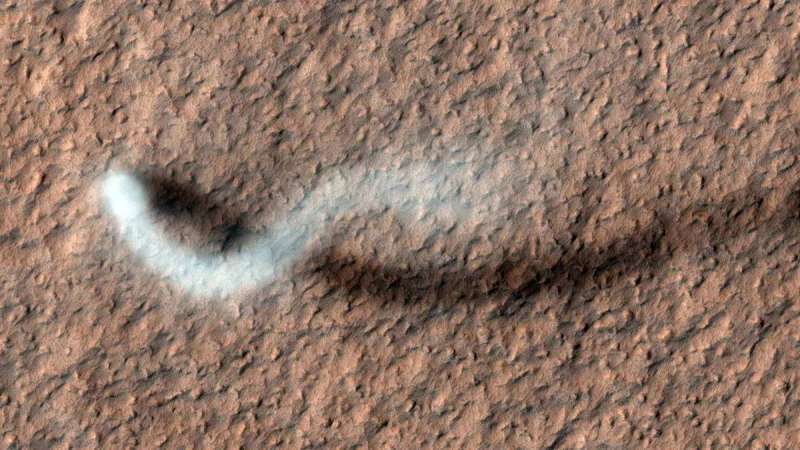In a very important precedent that will help to understand the climate of the Red Planet, the “Perseverance” rover was able to record the sound of the “dust devil” phenomenon that will help to better understand the climate of Mars, according to a study.
These so-called convection vortices, similar to the sand whirlwinds that strike some deserts on Earth, are one of the main atmospheric phenomena on Mars, a dry planet with a very sparse atmosphere, reports a local Arabic daily.
They form when there is a strong temperature difference between the soil and the air, and often get in the way of robotic exploration missions sent by humans. Also, the Jezero crater, where the “Perseverance” mobile robot has been operating since February 2021, witnesses many of these phenomena, but this vehicle manufactured by the US Space Agency (NASA) was not previously able to directly monitor its sound.
Fortunately, on September 27, a whirlwind 118 meters high passed over the robot’s head and its “SuperCam” instrument equipped with a microphone recorded the first sound from Mars immediately after its descent. The data reached Earth a few days later.
Naomi Murdock, lead author of the study, whose results were published in the journal Nature Communications, told AFP, “When we realized that we had obtained the images from the camera as well as the weather and acoustic sensor data at the site, we felt as if we had won the jackpot.”
“We hear the wind associated with the whirlwind, the moment it arrives, everything disappears because we are in the eye of the vortex, then the sound returns again when the microphone passes through the second wall,” added the planetary specialist at the Isai-Supero Institute in the French city of Toulouse, where the microphone was designed.
The microphone, in particular, transmitted an accurate clicking sound that allows “particle counting” in order to be able to study the structure and behavior of dust.
Naomi Murdock confirmed that “the dust cycle on Mars and in the sky plays a very important role for the climate, like the water cycle on Earth.”
The scientific officer for the “SuperCam” instrument, Sylvester Morris, who participated in the study, indicated that analyzing the dust makes it possible to “explore interactions” between the Earth and this very soft atmosphere, which was denser billions of years ago, allowing the presence of liquid water on the surface.
This new data would explain how dust is lifted from the surface of Mars, something scientists do not yet know.

